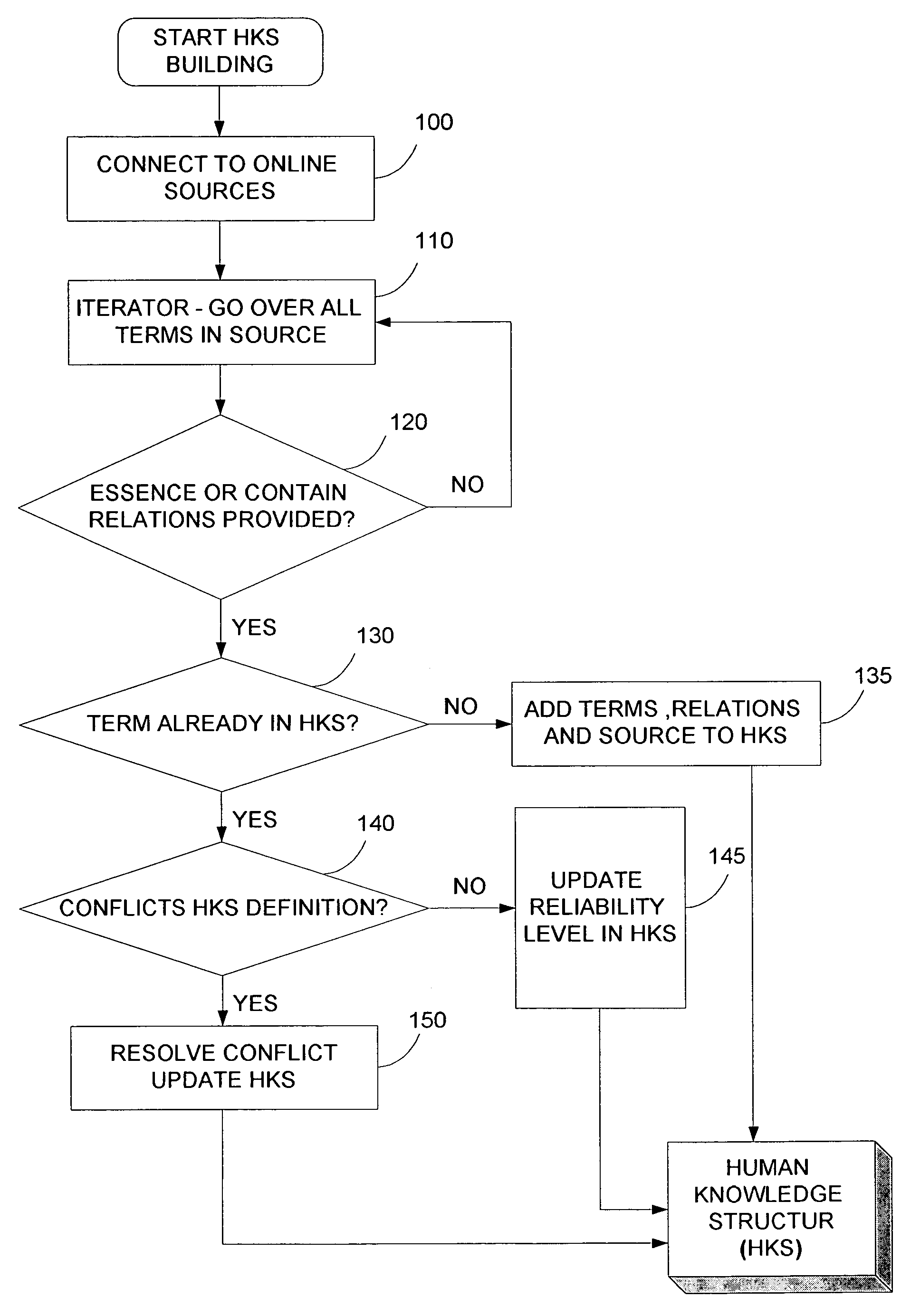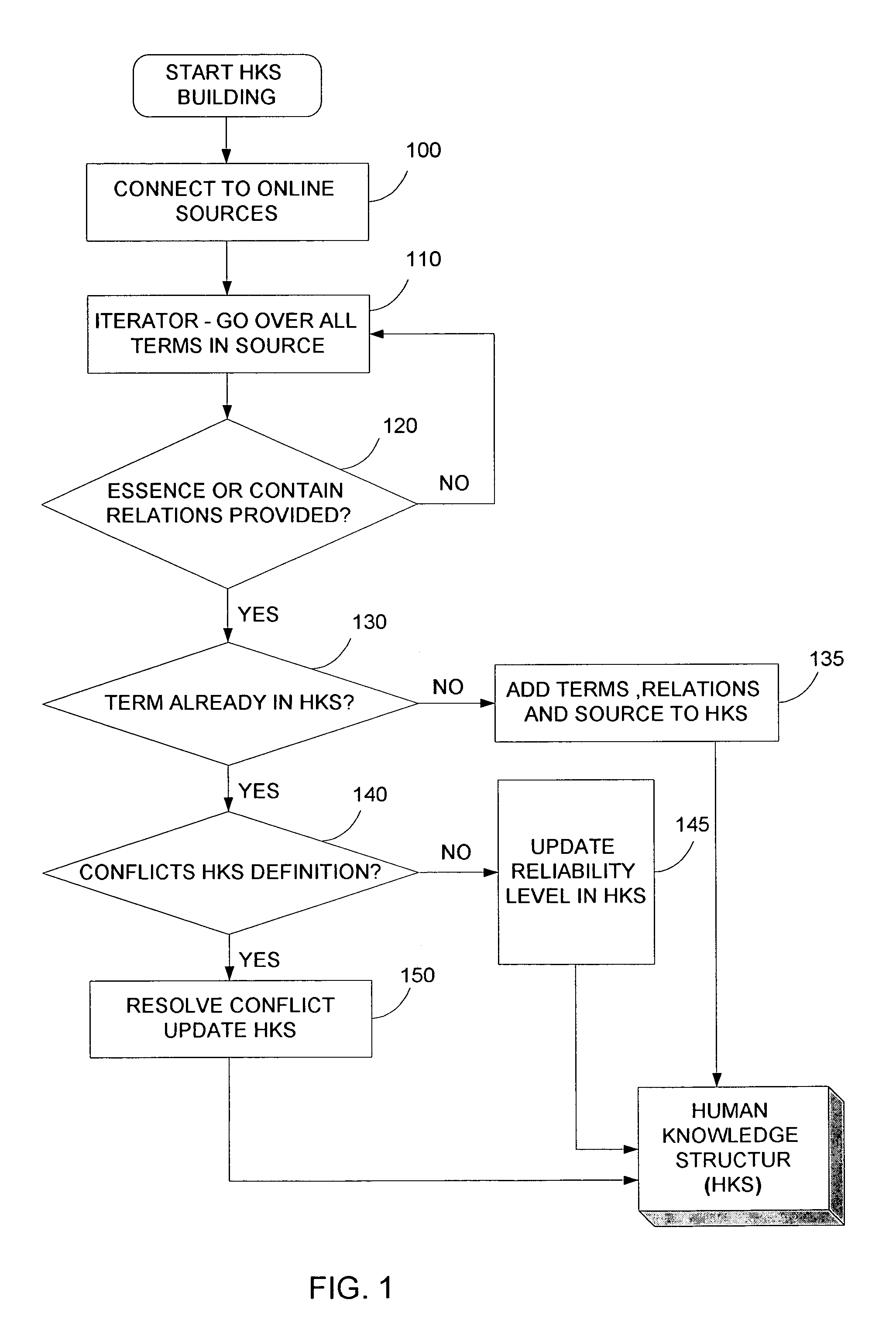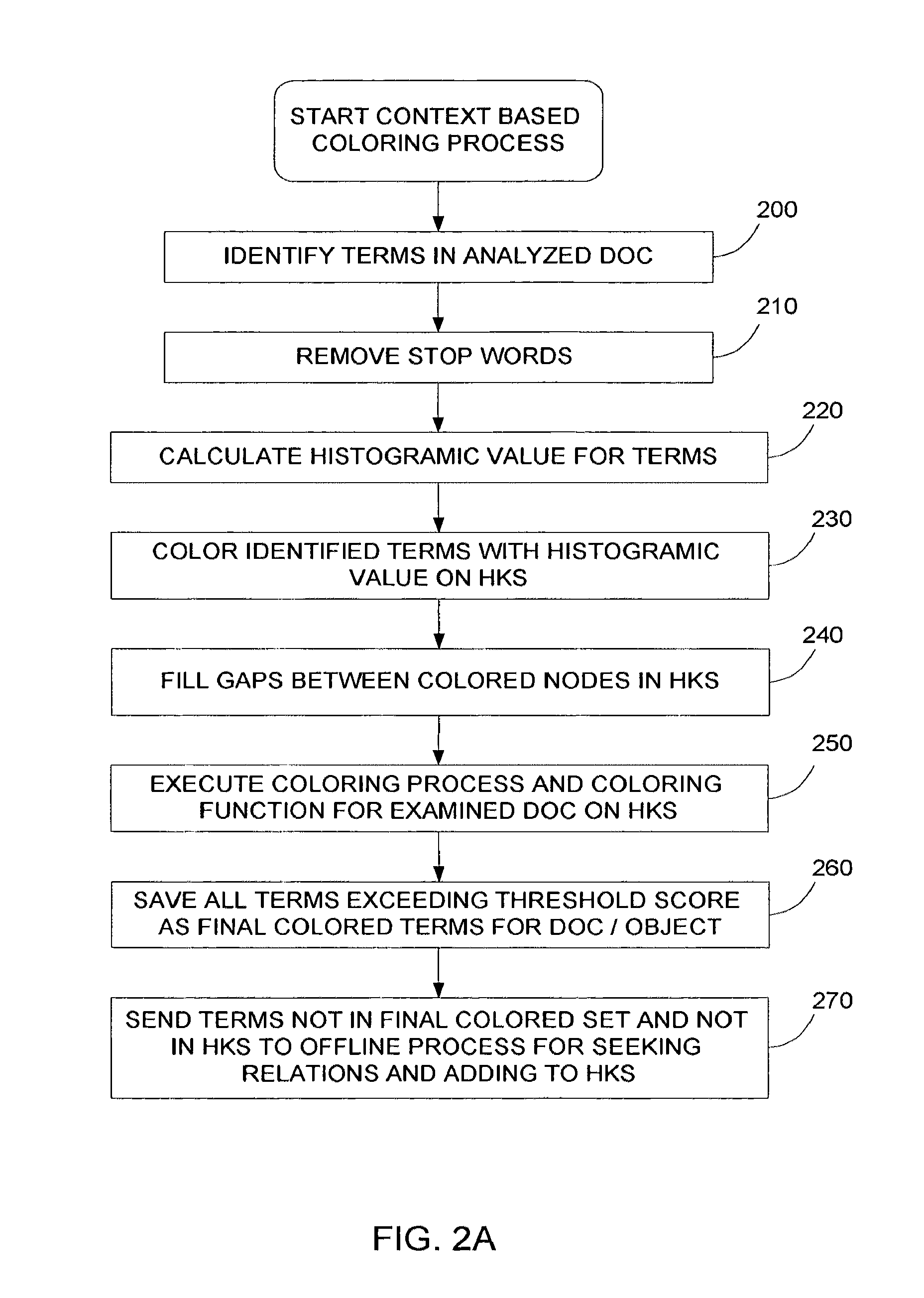System and method for matching search requests and relevant data
a technology of search request and matching data, applied in the field of information retrieval, can solve the problems of unable to rank objects that match the same tags/keywords in the search list, based on relevancy, and suffer from various limitations, so as to achieve more accurate ranking, less false positives, and higher relevancy results
- Summary
- Abstract
- Description
- Claims
- Application Information
AI Technical Summary
Benefits of technology
Problems solved by technology
Method used
Image
Examples
example
Terms in the HKS are in Bold. Stop Words are
[0080]The example is graphically illustrated in FIGS. 10-A through 10-O.
[0081]“There two coffee chops Manhattan like recommend. first, Empire Coffee, located top the Empire State Building offers great views of city way Statue of Liberty. second, Shamus, placed Fifth Avenue guaranties best menu borough.”
[0082]Histogramic-values for the example are as follows(Initially, all values are 1):
[0083]
Two1City1Coffee Shop1Guarantee1Like1All1Manhattan1Way1Recommend1Statue of Liberty1First1Second1Top1Shamus1Empire Coffee1Fifth Avenue1Located1Best1Empire State1Menu1BuildingBorough1Offer1Placed1Great1View1
For simplicity we marked up only predecessors of Contain relations (and not predecessors of Essence relations) in this example.
[0084]Assume that the score for an “Essence” relation is 0.8 and the score for a “Contain” relation is 0.6. The scores are powered for each generation between the source and the target. Practically only 2-3 g...
examples
The following is a search request for the examples below: “Celtics beat Lakers in Finals”.
[0104]1. The following sentences will be accepted:[0105]1.1. “Celtics beat Los Angeles Lakers in Finals”—Extra words between the searched words[0106]1.2. “Celtics sweep Lakers in Finals”—Synonym[0107]1.3. “A huge drama in NBA finals—Celtics beat the Lakers”—A cyclic permutation with extra word.
2. The following sentences will not be accepted:[0108]2.1. “Lakers beat Celtics in Finals”—Not a cyclic permutation.[0109]2.2. “Celtics beat the Suns. The Lakers awaits in Finals”—Not in the same sentence. The full stop separates the text to two sentences.[0110]2.3. “Celtics didn't beat Lakers in Finals”—Negative.[0111]2.4. “Celtics lost against Lakers in Finals”—Antonym (Loose≠Beat) and extra word.
[0112]Reference is now made to FIG. 4 which is a schematic overview illustration of an embodiment of the data structure of the “100 percentage points to keyword / tag sets” method of the present invention (the we...
PUM
 Login to View More
Login to View More Abstract
Description
Claims
Application Information
 Login to View More
Login to View More - R&D
- Intellectual Property
- Life Sciences
- Materials
- Tech Scout
- Unparalleled Data Quality
- Higher Quality Content
- 60% Fewer Hallucinations
Browse by: Latest US Patents, China's latest patents, Technical Efficacy Thesaurus, Application Domain, Technology Topic, Popular Technical Reports.
© 2025 PatSnap. All rights reserved.Legal|Privacy policy|Modern Slavery Act Transparency Statement|Sitemap|About US| Contact US: help@patsnap.com



